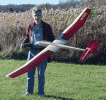Electronics & Technology
- See Full List of AI Topics -
The Haas Effect, is
a psychoacoustic phenomenon that governs how humans perceive the spatial origin
of sound when direct and delayed signals overlap. Closely related to the precedence
effect, it plays a critical role in audio engineering, influencing sound localization
and system design across RF and acoustic applications. Named after Helmut Haas,
who formalized its principles, this effect underpins technologies from public address
systems to advanced stereophonic reproduction. Herein examines its originator, discovery,
applications in audio systems, relevance to equipment manufacturers, its connection
to the precedence effect, and the detailed physics and mathematics that define its
behavior.
The Helmut Haas Effect, formalized in 1949, elucidates how delayed sounds within
40 ms fuse with direct signals, with localization tied to the first wavefront.
Its mathematical foundation - sound superposition, phase shifts, and auditory integration
- underpins its use in PAs, stereo systems, and DSPs. Equipment manufacturers harness
its principles for spatial audio, while its precedence connection ties it to human
perception. For RF and audio engineering, it offers a robust framework for optimizing
sound in complex environments.
Originator and Discovery
Helmut Haas, a German physicist and acoustician, first documented the effect
in his 1949 doctoral dissertation at the University of Göttingen, titled "Über den
Einfluss eines Einfachechos auf die Hörsamkeit von Sprache" ("On the Influence of
a Single Echo on the Audibility of Speech"). His findings were published in English
in 1951 in Acustica (Vol. 1, pp. 49-58), enhancing its accessibility. While the
precedence effect was initially outlined by Lothar Cremer in 1948 as the "law of
the first wavefront" and further explored by Hans Wallach et al. in 1949 (The American
Journal of Psychology, Vol. 62, pp. 315-336), Haas's work distinguished itself through
its focus on speech intelligibility and controlled experiments.
Haas conducted his research using two environments: an anechoic rooftop to eliminate
unwanted reflections and a reverberant room with a 1.6-second decay time. He employed
recorded speech played through two loudspeakers positioned at 45° left and right
of a listener, 3 meters away, varying the delay and amplitude of a single reflection.
His key observation was that a delayed sound arriving within 1 to 40 milliseconds
of the direct sound fused perceptually with it, with the direction determined by
the first arrival, even if the delayed sound was up to 10 dB louder. This amplitude
tolerance and temporal window refined earlier precedence concepts, establishing
the Haas Effect as a distinct phenomenon.
The Precedence Effect Connection
The Haas Effect is a specialized subset of the precedence effect, a binaural
psychoacoustic principle where the brain prioritizes the first-arriving sound wave
for localization, suppressing subsequent arrivals within a short temporal window.
Wallach et al. identified this window as 1-5 ms for clicks and up to 40 ms
for complex signals like speech, beyond which a separate echo is perceived. Haas's
contribution was to demonstrate that delays of 10-30 ms still maintain directional
dominance of the first wavefront, even with a delayed signal up to 10 dB louder,
enhancing loudness and spaciousness without altering perceived origin. This "fusion
zone" makes the Haas Effect a practical tool for audio applications.
Physics and Mathematics Involved
The Haas Effect is grounded in the physics of sound propagation, wave superposition,
and human auditory processing, quantifiable through mathematical models using basic
operations and Greek symbols.
1. Sound Propagation and Delay
Sound travels at approximately 343 m/s in air at 20°C. A delay
τ of 10 ms corresponds to a path
difference of 3.43 meters, common in room acoustics or multi-speaker setups. For
a direct sound sd(t) = Ad * cos(2*π*f*t)
arriving at time t, and a delayed sound sr(t) = Ar * cos[2 *
π * f * (t -
τ)] with delay
τ, the combined signal at the listener
is:
s(t) = sd(t) + sr(t) = Ad * cos(2*π*f*t) + Ar * cos[2*π*f*(t -
τ)]
Expanding the delayed term using the cosine angle subtraction formula:
s(t) = Ad * cos(2*π*f*t)
+ Ar * [cos(2*π*f*t)
* cos(2*π*f*τ)+ sin(2*π*f*t) * sin(2*π*f*τ)]
s(t) = [Ad + Ar * cos(2*π*f *τ)] * cos(2*π*f*t) + Ar * sin(2*π*f*τ)*sin(2*π*f*t)
The resultant amplitude and phase depend on
τ and frequency f:
A_resultant = [(Ad + Ar * cos(2*π*f*τ))2 + (Ar * sin(2*π*f*τ))2]0.5
φ = arctan[(Ar * sin(2*π*f*τ)) / (Ad + Ar * cos(2*π*f*τ))]
For τ = 10 ms and f =
1 kHz, 2*π*f*τ = 20 *
π rad (10 cycles), causing interference - constructive or destructive based
on Ar/Ad and τ.
2. Auditory Fusion and Temporal Window
The human auditory system integrates sounds within a temporal window of approximately
40 ms, determined by cochlear integration and neural processing delays. For
τ < 40 ms, the brain perceives
sd(t) and sr(t) as a single event with combined amplitude:
s_perceived(t) ≈ Ad * cos(2*π*f*t)
+ Ar * cos[2*π*f*(t
- τ)]
The perceived loudness scales with the total energy:
L_total ≈ 10 * log10(Ad2 + Ar2)
For Ar = 3 * Ad (10 dB louder), L_total ≈ 10 * log10(Ad2
+ 9 * Ad2) = 10 * log10(10 * Ad2), a
~10 dB increase, yet localization remains tied to sd(t).
3. Localization and Precedence
Localization relies on interaural time differences (ITD) and level differences
(ILD). For a listener with ears ~15 cm apart (max ITD ~0.44 ms), the first
wavefront sets ITD:
ITD = (d/v) * sin(θ)
where d is ear spacing, v = 343 m/s, and θ is the source angle. A delayed sound
at τ < 40 ms contributes to loudness
but not ITD, as the brain locks to the initial cue. The Haas threshold of 10 dB
(Ar/Ad ≤ 3.16) reflects auditory masking limits, beyond which
later arrivals compete.
4. Echo Threshold and Comb Filtering
For τ > 40 - 50 ms, sr(t) separates
as an echo, perceived distinctly. Within 1-40 ms, interference creates a comb filter:
H(f) = 1 + (Ar/Ad) * e(-j * 2*π*f*τ)
|H(f)|2 = [1 + (Ar/Ad) * cos(2*π*f*τ)]2 + [(Ar/Ad) * sin(2*π*f*τ)]2
Peaks occur at f = n / τ (e.g.,
100 Hz for τ = 10 ms), dips at
f = (n + 0.5) / τ—audible as
tonal coloration but fused spatially by Haas.
Exploitation in Audio Systems
The Haas Effect is applied across audio engineering to enhance spatial perception
and intelligibility:
- Public Address Systems
In large venues, delay towers reinforce primary sound sources. The signal to
distant speakers is delayed by the acoustic travel time (e.g., 29 ms for 10
meters) plus 10-20 ms, fitting the Haas fusion window. Amplifying this delay
up to 10 dB louder ensures coverage while preserving source localization.
- Stereophonic Reproduction
In stereo mixing, a mono signal is duplicated, panned left, and delayed on the
right by 5-35 ms, widening the soundstage. For
τ
= 20 ms, f = 1 kHz, phase shift 2*π*f*τ = 40 *
π rad enhances spatial cues without significant comb filtering in mono playback.
- Control Room Design
Early studio designs used rear "Haas kickers" to reflect sound within 20-40 ms,
improving imaging. Modern diffusion reduces comb effects but retains the principle
for spatial audio.
Equipment Manufacturers
Manufacturers integrate the Haas Effect into hardware and software:
- Yamaha, Bose, QSC: DSPs like Yamaha's SPX or QSC's Q-SYS offer delay
precision (0.1 ms steps) for PA alignment, leveraging Haas's fusion range.
- Dolby, DTS: Surround systems (e.g., Dolby Atmos) use delay algorithms
to position virtual sources, rooted in Haas and precedence principles.
- Waves, FabFilter: Plugins like Waves' H-Delay apply 5-40 ms delays
for stereo widening, with phase adjustments for mono compatibility.
- Sennheiser, Shure: RF audio systems with DSP sync multiple receivers
using Haas-aligned delays for coherent output.
Practical and Theoretical Implications
- Bandwidth: While AM/FM modulation focuses on signal suppression, the
Haas Effect enhances audio clarity in RF communications by managing reflections
within 40 ms.
- Power Efficiency: Unlike SSB's component elimination, Haas preserves
all signals, manipulating perception for efficiency.
- Limitations: Delays >50 ms or >10 dB differences disrupt fusion,
critical in RF audio design.
 This content was generated by primarily
the ChatGPT (OpenAI), and/or
Gemini (Google), and/or
Arya (GabAI), and/or
Grok (x.AI), and/or DeepSeek artificial intelligence (AI) engine.
Some review was performed to help detect and correct any inaccuracies; however,
you are encouraged to verify the information yourself if it will be used for critical
applications. In some cases, multiple solicitations to the AI engine(s) was(were) used to assimilate
final content. Images and external hyperlinks have also been added occasionally.
Courts have ruled that AI-generated content is not subject to copyright restrictions,
but since I modify them, everything here is protected by RF Cafe copyright. Many
of the images are likewise generated and modified. Your use of this data implies
an agreement to hold totally harmless Kirt Blattenberger, RF Cafe, and any and all
of its assigns. Thank you. Here are the major categories. This content was generated by primarily
the ChatGPT (OpenAI), and/or
Gemini (Google), and/or
Arya (GabAI), and/or
Grok (x.AI), and/or DeepSeek artificial intelligence (AI) engine.
Some review was performed to help detect and correct any inaccuracies; however,
you are encouraged to verify the information yourself if it will be used for critical
applications. In some cases, multiple solicitations to the AI engine(s) was(were) used to assimilate
final content. Images and external hyperlinks have also been added occasionally.
Courts have ruled that AI-generated content is not subject to copyright restrictions,
but since I modify them, everything here is protected by RF Cafe copyright. Many
of the images are likewise generated and modified. Your use of this data implies
an agreement to hold totally harmless Kirt Blattenberger, RF Cafe, and any and all
of its assigns. Thank you. Here are the major categories.
Electronics & High Tech
Companies | Electronics &
Tech Publications | Electronics &
Tech Pioneers | Electronics &
Tech Principles |
Tech Standards Groups &
Industry Associations | Societal
Influences on Technology
 While working on an
update to my
RF Cafe Espresso Engineering Workbook project to add a couple calculators
about FM sidebands (available soon). The good news is that AI provided excellent
VBA code to generate a set of
Bessel function plots. The bad news is when I asked for a
table
showing at which modulation indices sidebands 0 (carrier) through 5 vanish,
none of the agents got it right. Some were really bad. The AI agents typically
explain their reason and method correctly, then go on to produces bad results.
Even after pointing out errors, subsequent results are still wrong. I do a
lot of AI work and see this often, even with subscribing to professional
versions. I ultimately generated the table myself. There is going to be a
lot of inaccurate information out there based on unverified AI queries, so
beware. While working on an
update to my
RF Cafe Espresso Engineering Workbook project to add a couple calculators
about FM sidebands (available soon). The good news is that AI provided excellent
VBA code to generate a set of
Bessel function plots. The bad news is when I asked for a
table
showing at which modulation indices sidebands 0 (carrier) through 5 vanish,
none of the agents got it right. Some were really bad. The AI agents typically
explain their reason and method correctly, then go on to produces bad results.
Even after pointing out errors, subsequent results are still wrong. I do a
lot of AI work and see this often, even with subscribing to professional
versions. I ultimately generated the table myself. There is going to be a
lot of inaccurate information out there based on unverified AI queries, so
beware.
|











